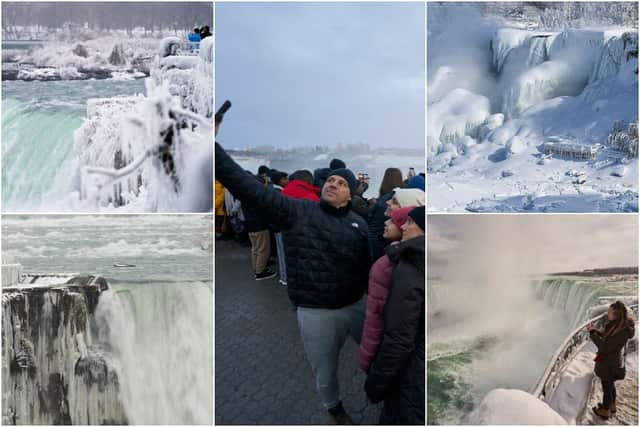Niagara Falls: are waterfalls frozen after freezing 2022 weather, where is it - how often do they freeze?
and live on Freeview channel 276
The deadliest winter storm to hit western New York in at least two generations stormed across the region on Friday and Saturday (23 and 24 December), leaving the city of Buffalo counting deaths and attempting to recover.
County Executive Mark Poloncarz called the blizzard “the worst storm probably in our lifetime”, even in an area known for heavy snowfall, as people continue to search for cars buried in snow drifts and more victims after one of the worst weather-related disasters ever to hit the western part of the US state.
Advertisement
Hide AdAdvertisement
Hide AdBuffalo is New York state’s second most populous city, and lies in the west of the state near the US border with Canada, at the eastern end of Lake Erie. It is situated roughly 20 miles south of the famous Niagara Falls, which themselves have been affected by the sub-zero temperatures.
So have the iconic waterfalls frozen over completely? Here is everything you need to know.
Has Niagara Falls frozen over?
Aerial photographs of the Niagara Falls area have shown the usually roaring waterfalls transformed into a partially frozen winter wonderland, with freezing mist and sheets of ice blanketing parts of the iconic tourist destination and offering a beautiful respite to the very human toll taken by the cold weather.
The 2,590 foot (790m) wide Horseshoe Falls, which divides New York state from Ontario, Canada, was partially covered with ice on Tuesday (27 December).
Advertisement
Hide AdAdvertisement
Hide Ad

How often does Niagara Falls freeze over?
According to the Niagara Falls State Park website, the Falls very rarely stop flowing entirely due to ice and freezing temperatures. This is because of the continuous movement of the strong currents and broiling rapids that transport 3,160 tonnes of water over the falls every second.
In fact, the falls have only been recorded to have completely stopped flowing once - over 170 years ago in 1848, according to Niagara Parks.
Still, one visitor from California who braved the -8C temperatures to visit the falls tweeted that the Niagara River appeared to have enough ice buildup for people to walk from the Canadian side to the US. A dangerous feat which in no way should ever be attempted.
“Was it an intriguing and surreal Arctic experience for a kid from California, yes!” they wrote.
Advertisement
Hide AdAdvertisement
Hide AdWhat’s happening in Buffalo?
While the spectacle of a semi-frozen Niagara Falls is unmistakably beautiful, it shouldn’t be forgotten that just a few miles away, the city of Buffalo is dealing with the very human cost of the recent winter storms.
Officials have reported that more than 30 people have died in the area, including seven storm-related deaths reported by Buffalo Mayor Byron Brown’s office on Tuesday (27 December).
The dead were found in cars, homes and snowbanks. Some had died while shovelling snow, others when emergency crews could not respond in time to medical crises.
The death toll surpasses that of the historic blizzard of 1977, blamed for killing as many as 29 people in a region known for harsh winter weather.
Advertisement
Hide AdAdvertisement
Hide AdThere have been at least an additional two dozen deaths reported across the rest of the US as a result of the fierce winter storms, and power cuts in communities from Maine to Washington state. At least 49 people have died across the country.
But the Buffalo region - situated on the US’ border with Canada - has been particularly hard hit, with the recent winter storm coming a little over a month after the region was inundated with a previous “historic” snowfall.
Comment Guidelines
National World encourages reader discussion on our stories. User feedback, insights and back-and-forth exchanges add a rich layer of context to reporting. Please review our Community Guidelines before commenting.
